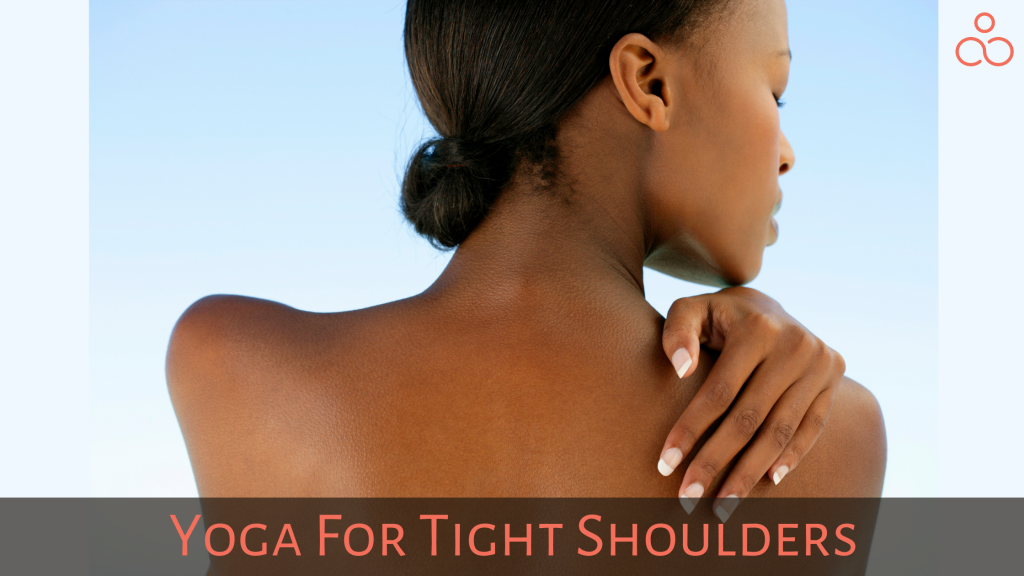Do you have a nagging twitch in your shoulder? Do you have problems moving your arms? A tense shoulder might be to blame, and yoga can help bring relief. Stiff shoulders can cause more than simply pain. These could restrict the range of motion, cause tension headaches, and even cause injury if untreated. Shoulder strain is commonly caused by poor alignment, working full time, sitting at a computer, and stress. The best part is that with a little effort, you could fade away the stiffness and tightness by practicing the poses in yoga for tight shoulders.
10-minute yoga sequence for tight shoulders
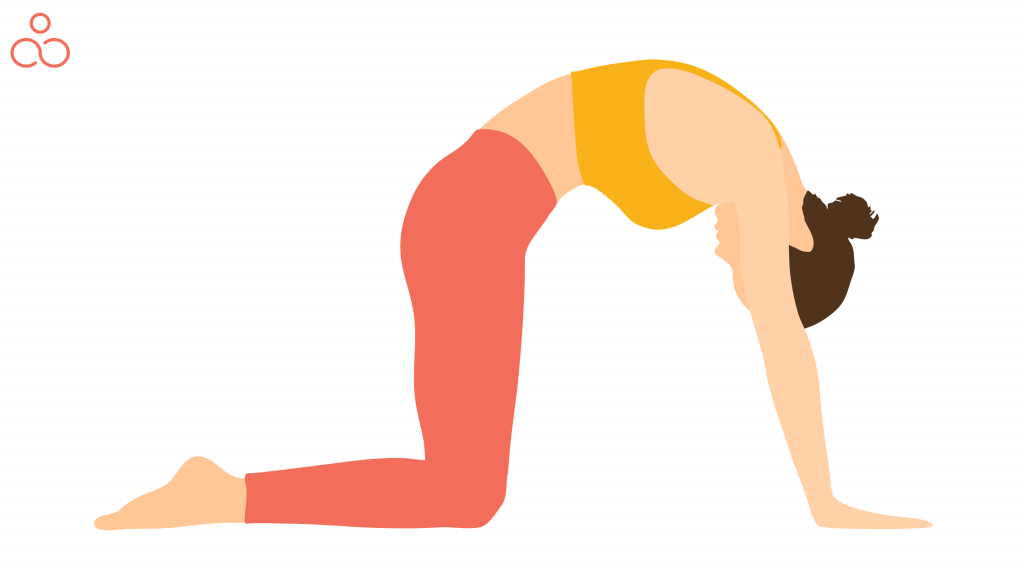
- Seated Cat-Cow: Seated cat-cow is an excellent yoga pose for tight shoulders because you will experience a different stretch than if you did cat-cow on all fours. Using your knees to counter your weight also relieves any weight on your shoulders if you have any injuries or shoulder joint problems.
- Eagle arms pose: Add eagle arms to your sitting cat-cow for a uniquely delicious stretch into your shoulders! Eagle arms may be performed in any standing or sitting position. When combined with sitting cat-cow, it creates an incredibly fantastic yoga posture for shoulder problems.
- Wait the table: Yes, that’s not a genuine yoga stance, but that’s what I’m going to name it because, in this pose, you rock your head to one ear and elevate your opposite arm as if you’re a waiter holding a tray. Then, using your hand, slide it up, down, forward, or back to discover the juicy area in your shoulder and neck! Exhale slowly and softly. Change sides and execute on the opposite side.
- Thread the needle pose: Stretch your arm beneath your other armpit, resting on that shoulder, beginning on the tabletop. Your opposite hand can be in one of the three positions:
- Holding your body up,
- Extended out long like in a child’s pose, or
- Brought to your low back for a greater twisting effect.
On an exhale, softly release through the tabletop. Change sides and execute on the opposite side.
- Interlace in the mountain pose: Interlace your fingers behind you while standing in a mountain posture. Draw your shoulders back together and elevate your heart as though in an upward-facing facing dog position. Lift your head slowly, being careful not to crush the back of your neck. Pull your fingers down to the floor, keeping your shoulders relaxed as you expand your front torso.
- Arms across the chest: Cross one arm over your chest in your preferred sitting or standing position. Hook your arm at your elbow with the other hand, using the bent arm to drag your arm close to your body. Change sides and execute on the opposite side.
- Puppy pose with namaste: Starting on the wooden table, walk your knees back while resting your forehead on the floor and moving your chest toward the earth. If lowering your head to the floor isn’t possible in your body, place a block beneath your head. Extend your arms in front of you in a child’s stance. Compress the low abdomen to support the low back, and point the tailbone towards the back wall. Put your hands in Namaste over your head, lifting your hands.
8 other yoga poses for tight shoulders
Marjaryasana (Cat Pose): This technique targets the neck, back, and shoulders, delivering soothing relaxation.
- Begin on the Tabletop by stacking your shoulders on the forearms and your knees underneath your hips.
- Exhale by rounding your spine toward the sky and pressing through your palms, allowing your shoulder blades to separate.
- Bring your chin nearer your chest as you lower your head to the floor.
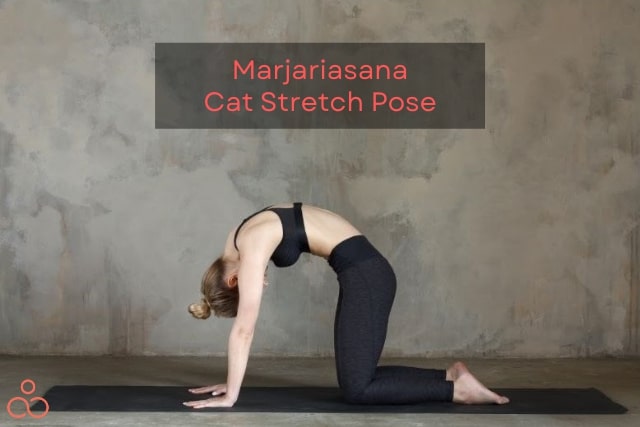
Prasarita Padottanasana (Wide-Legged Standing Forward Bend): While you may think of this as a hamstring or lower body stretch, the advantages to your shoulders come from the positioning of your hands. Rather than lowering your arms to the floor in front of you, clasp them over your head to ease stress in your deltoids and trapezius.
- Start in Tadasana, with your arms by your sides.
- Step your feet out, maintaining them parallel, until they are in line with your wrists.
- Add an arm variation by clasping your hands behind your back and resting your thumbs on your sitting bones.
- Fold forward from the hip joints on an exhale, keeping your torso open. Press your knuckles toward the ceiling while keeping your fingers interlocked and your arms straight.
Bhujangasana (Cobra Pose): Cobra Pose opens your chest and shoulders by relieving tension in your trapezius.
- Begin by reclining on your mat, legs straight behind you, hands below your shoulders, elbows tucked under.
- Firmly press your feet and thighs into the mattress.
- Straighten your arms on an inhale to elevate your chest off the mat.
- Pull your shoulder blades back gently while widening up your chest and raising through to the top of your chest without pulling your ribs forward.
- Lift your hands off the mat and hover them about one inch above the ground before lowering them back down. This action assures that the arch comes from your back rather than from pressing too hard with your legs.
Dhanurasana (Bow Pose): Relax your neck, shoulders, and deltoids while opening your chest. This position expands your entire back and combats slouching.
- Lie on your stomach with your arms at your sides, palms up.
- Exhale by bending your knees such that your feet are close to your buttocks. Maintain a hip-width spacing between your knees.
- Grab your ankles with your hands behind your back.
- Lift your feet toward the sky while lifting your thighs off the mat on an inhale.
- Draw your shoulder blades away from your ears and push your shoulder blades towards your back to expand your chest.
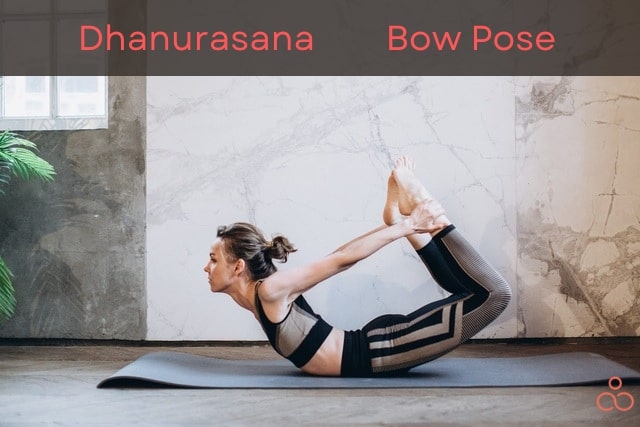
Natarajasana (Lord of the Dance Pose or simply dancers pose): The Dance Lord Pose is similar to Bow Pose, however, it is a standing variant that focuses solely on a single leg and arm at a moment. Standing allows you to push and extend a bit deeper, resulting in a greater bend for the neck, shoulder, and upper back.
- Lift your left foot to the left buttocks while bending your left knee on an inhale.
- Grab the left ankle or outside of your left foot with your left hand.
- Extend your left thigh perpendicular to the floor behind you. Extend your right forearm forward, parallel to the floor, in front of your torso.
- Instead of bending forward, focus on expanding the foot towards your hand to go deeper.
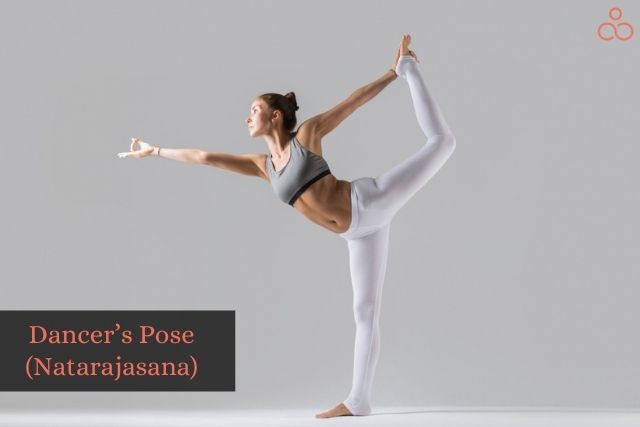
Belt Shoulder Circles:
- Start by standing comfortably with both feet hip-width apart.
- Grasp your rope with both hands and move them apart so that they are comfortably wider than your shoulders.
- Start rotating your head up and around while attempting to maintain straight arms.
- As you raise your left arm overhead, lower the right hand towards your hip.
- Move both of your arms beyond your head, allowing their weight to fall back and opening up your chest.
- As you raise your right arm upward, lower your left hand down towards your right hip.
- Swing the right arm in front of your body to finish the rotation and then take a step back to your starting position.
- Until you reach four to eight rounds, swap.
Cactus Arms to Eagle Arms:
- Beginning in the Easy Pose (Sukhasana), place both shoulders above your hips and tighten your abdominal muscles.
- Take a deep breath and raise your arms to shoulder level.
- Make a 90 ° angle using your arms by bending your elbows.
- Face your hands forward and bind your fingers together.
- Draw your arms ahead of you, exhale, and cross your right arm over your left.
- Bring your hands together as you round each other with your arms.
- Draw your hands from your face and raise your elbows to the heavens.
- Allow the space between your shoulders to expand over your back.
- Inhale, relax, and return to Cactus Arms.
- Repeat Eagle Arms while exhaling, this time dipping your left arm underneath.
First a short clip to the cactus arms pose:
Transition from the pose above to the eagle arm pose:
Broken Wing Pose:
- Lay down on your stomach, your legs extended behind you.
- Keep your right arm parallel to your shoulder and extend it out to the side with your palm facing down.
- Put your hand on the carpet next to your left shoulder while bending your left arm.
- Roll slowly onto your right-hand side while maintaining a straight right arm by pressing against your left hand.
- Leave your legs extended or use your left leg as a kickstand for your right.
- By reaching your left arm up toward the ceiling and then letting it fall back softly, you may build the stretch across your chest.
- Use a block or place your right cheek on the mat to support your head.
- Hold for up to three minutes while exhaling fully.
- Hold for up to three minutes while exhaling fully and inhaling fully, then relax back to your stomach.
- Before continuing on the opposite side, stack your hands on top of one another and place your forehead on them as you take a few deep breaths.
Benefits of yoga for tight shoulders
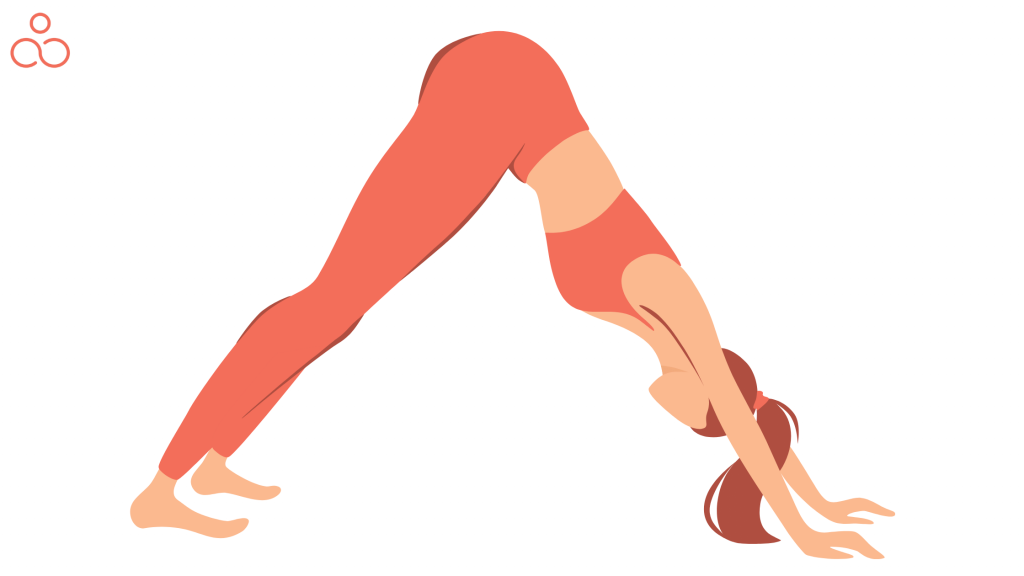
- Yoga, like physical therapy, has been shown in studies to aid with chronic pain. Yoga movements quickly relax muscle groups and relieve pain. Yoga is a typically safe approach to relieving discomfort. Yoga exercises for the shoulders provide advantages that your body and mind will appreciate.
- Yoga relieves stress and stiffness: When you are stressed, your body collects tension, which causes rigidity in certain areas such as your shoulders. Yoga for shoulder discomfort aids in the release of stress and stiffness. Certain yoga positions can aid in the promotion of flexibility and the reduction of tension.
- Yoga relieves shoulder pain caused by chronic conditions: Yoga helps to alleviate shoulder discomfort caused by chronic diseases. Shoulder discomfort may occur as a result of the long-term impact of chronic pain from disorders such as diabetes, cancer, and heart disease. Yoga practice regularly improves mobility, which can substantially supplement normal medical therapy. Yoga’s effects can supplement physical treatment and exercise.
FAQ’s
Can yoga relieve stiff shoulders?
One of the numerous benefits of yoga! Opening your chest and letting go of tight shoulders can make you feel better physiologically and aid in relaxation. Here are a few of my favorite shoulder-release yoga positions.
How can you relax your shoulders?
Place yourself next to a wall or doorway. Put your right hand on the edge of the wall or door frame while extending your right arm. Maintain a downward and backward-facing palm with your shoulders down and your hand below shoulder level. As soon as you feel the stretch, carefully turn your body to the left and away from the doorway.
What are the different types of upper back pains?
There are various types of shoulder and neck pains that could cause stiffness in your upper back such as:
- Cervicalgia – This causes stiffness or spasms in the cervical spine.
- Neck Sprain – This usually results from excessive strain on the neck muscles caused by heavy physical activity.
- Torticollis – People with this issue tend to tilt their heads more to one side when compared to the other side due to stiffness in the muscles.
- Shoulder Tendonitis – This is usually seen in sports or athletic people as a result of inflammation in the shoulder muscles and tendons.
- Shoulder Arthritis – This pain is caused due to damage to the cartilage in the shoulder joint.
Most of these issues can be alleviated with yoga stretches. However, we would always recommend consulting your doctor about your medical condition before commencing any new exercise.
What muscles result in stiff shoulders?
The muscle in question is your trapezius. Neck and shoulder discomfort is frequently brought on by poor posture and repeated motions, which are primarily brought on by tightness and over-activity of the trapezius muscle.
Conclusion
The shoulder is by far the most movable joint in the body, and it is utilized for a variety of actions, including grasping an object on a high shelf, extending the arm to use a handrail, and carrying big bags of groceries. As a result, it’s reasonable that it may be accidentally tweaked or feel a bit uncomfortable through overuse, even if you weren’t deliberately engaging those muscles.
When you’re feeling particularly tense, you may perform this entire yoga practice for the shoulders, or you can spread out the postures over the day.
You’ll feel like you’ve got a new set of shoulders in no time if you include these yoga positions in your usual self-care regimen. Put an end to tense shoulders forever!

